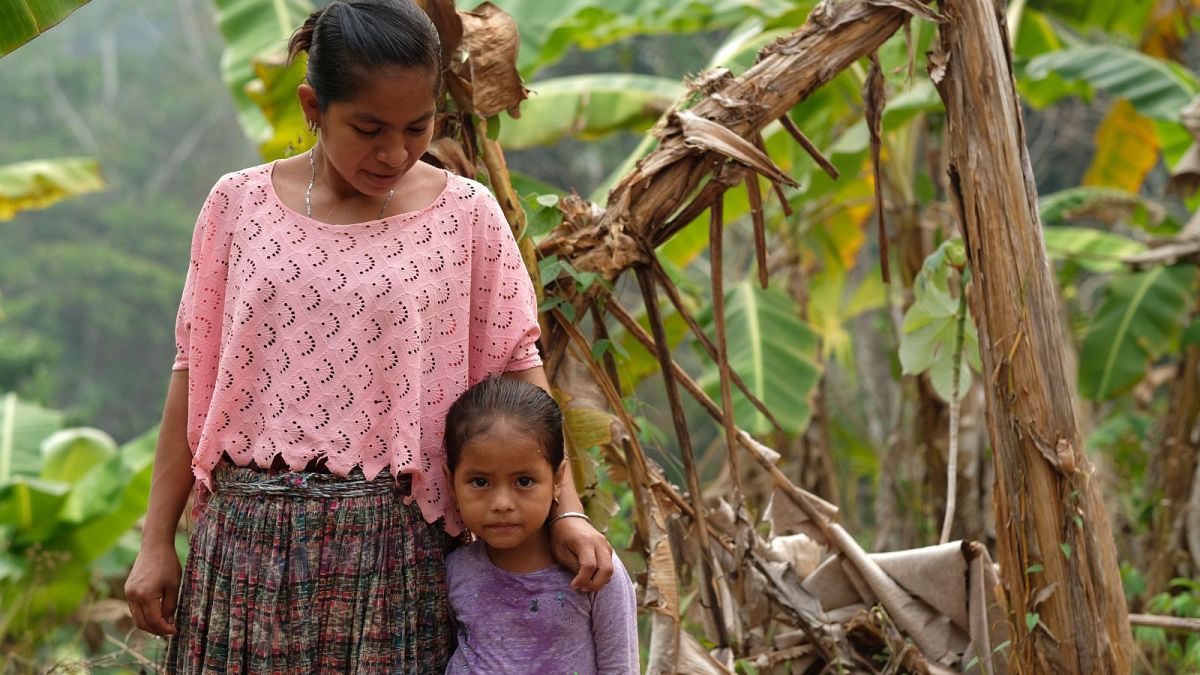The world’s best banana growing areas are at risk from the climate crisis, a new report warns.
Latin America and the Caribbean currently export around 80 per cent of bananas globally, filling supermarket shelves with the world’s favourite fruit.
But 60 per cent of the region’s most suitable banana growing areas could be lost by 2080 due to rising temperatures and extreme weather, according to research from international development charity Christian Aid.
“Climate change is impacting banana farmers around the world, who are battling daily with unpredictable weather patterns, scorching sun, floods, hurricanes, and increased pests and diseases,” says Anna Pierides, Fairtrade Foundation’s senior sustainable sourcing manager for bananas.
The banana is beloved globally, but is of special importance to some of the world’s poorest people. More than 400 million people rely on bananas for 15 to 27 per cent of their daily calories, making it the fourth most important food crop after wheat, rice and maize.
How are bananas affected by climate change?
“Climate change has been killing our crops. This means there is no income because we cannot sell anything,” says Aurelia Pop Xo, a 53-year-old banana grower in Guatemala.
“What is happening is that my plantation has been dying. So, what has been happening, is death.”
The climate crisis is hitting banana plantations in myriad ways. Bananas need a temperature range of between 15-35°C to thrive, but are also very sensitive to water shortages, the report states.
Storms are a big problem as they shred leaves, making it harder for the crop to photosynthesise. Fungal infections are also an increasing threat due to rising temperatures, with one such disease, Fusarium Tropical Race 4, causing the loss of entire plantations.
“Without systemic change, we risk witnessing the devastation of the Cavendish banana [the dominant variety] to Fusarium Tropical Race 4, a fungal infection that attacks the roots of plants and can lead to the complete loss of farms and plantations,” explains Holly Woodward-Davey, project coordinator at Banana Link, which works across the banana supply chain.
“The disease is now found in key supplier countries of European supermarkets, such as Colombia and Peru.”
For Aurelia in Guatemala, the greatest threat her community faces is the high heat, which has struck for two years in a row, leaving her banana trees “folding down and dying”.
“In the past, there was a prediction that this would happen in the future, but it has come earlier, and this is because we are not taking care of our motherland, our ecosystems, and this is very worrying for our kids and especially for our grandkids,” she adds.
How buying Fairtrade and organic bananas helps farmers
Christian Aid, food campaigners and experts are calling for action at different levels to protect the popular fruit and those who cultivate it.
To tackle the issue at its root, richer, polluting nations must urgently reduce their carbon emissions, the development agency says.
As part of the Paris Agreement, countries will this year submit new national climate action plans, which will update their emissions reduction targets, notes Osai Ojigho, director of policy and campaigns at Christian Aid.
“This is a huge opportunity for countries to accelerate the transition away from fossil fuels to clean energy whilst also ensuring climate finance reaches people in desperate need of it,” she says. “World leaders must not slip up.”
Christian Aid is also calling for banana growers and agricultural communities to receive targeted support from international climate finance to adapt to the changing climate.
Meanwhile, consumers are being urged to help by choosing Fairtrade produce, which ensures a greater amount is paid to farmers.
“The UK has among the highest per capita consumption of bananas in Europe, yet our legacy of low supermarket prices only serves to devalue bananas,” argues Pierides. “With the increasing effects of climate change and rising costs, we must make sure banana farmers aren’t left paying the price for our low-cost fruit.”
Seeking out organic bananas also helps counter the high use of chemical fertilisers in the production of the fruit, which contributes to greenhouse gas emissions and can damage local ecosystems.
“The climate crisis and the associated biodiversity crisis demand a rethink of industrial food production systems, which depend on the use of increasing amounts of harmful chemicals,” says Woodward-Davey.
Is it time to branch out beyond the Cavendish?
The ubiquitous curvy yellow fruit that springs to mind when we think of bananas is actually only one variety of the species: the Cavendish.
It is named after William Cavendish, 6th Duke of Devonshire in England, who received a shipment of them from Mauritius in 1834 and proceeded to have his gardener cultivate them in the greenhouses of his stately home, Chatsworth House.
The cultivars were shipped around the world, and became the top banana in the 1950s when Panama disease devastated the Gros Michel (“Big Mike”) variety which formerly held that position.
It was initially assumed that Cavendish cultivars were more resistant to the disease, but recent outbreaks of Panama disease TR4 in the Caribbean and elsewhere have upended that hope.
Since Cavendish bananas are unable to reproduce sexually and are propagated via identical clones, their genetic diversity is very low, rendering them vulnerable to disease.
With climate change exacerbating the spread of TR4, experts like Sally Musungu – an environmental researcher with the Schlumberger Foundation – think we “urgently need to move beyond the Cavendish and explore the rich genetic diversity within banana species”.
“Fortunately, a rich pool of genetic diversity exists within banana species, including hundreds of under-researched varieties with potentially valuable climate-resilient traits,” she says.
“By exploring this genetic diversity and leveraging emerging tools such as gene editing, we can accelerate the development of new banana varieties that can better serve farmers and adapt to future climate conditions.”

